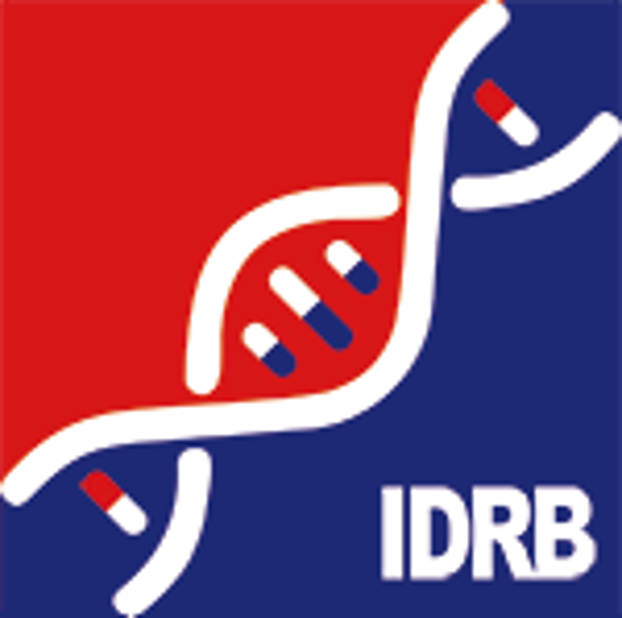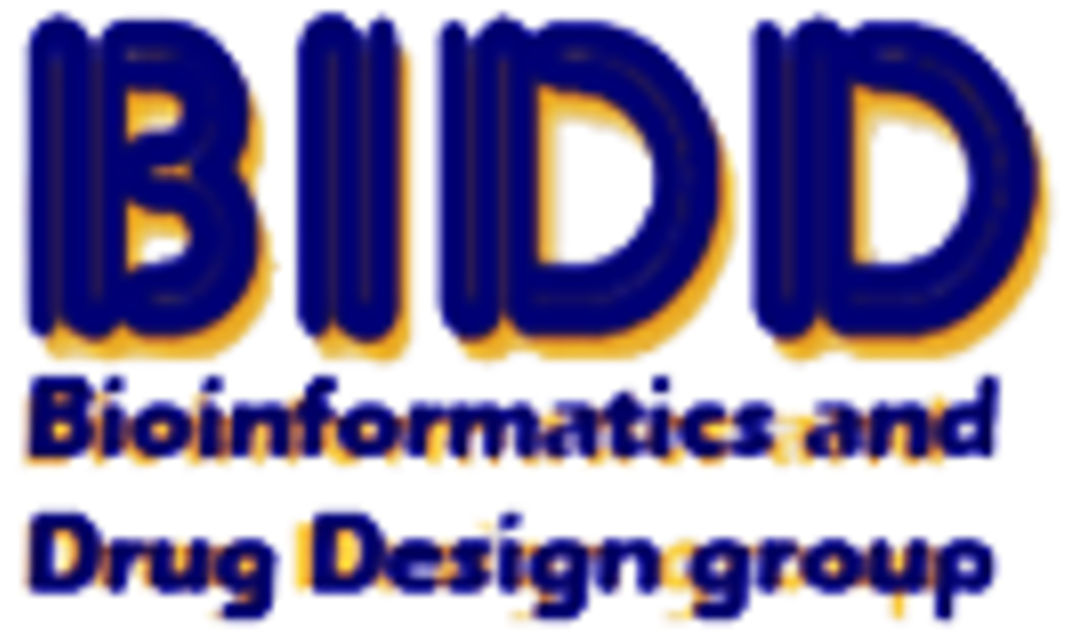Target Information
| Target General Infomation | |||||
|---|---|---|---|---|---|
| Target ID |
T56923
|
||||
| Former ID |
TTDC00087
|
||||
| Target Name |
High affinity interleukin-8 receptor B
|
||||
| Gene Name |
CXCR2
|
||||
| Synonyms |
CDw128b; CXCR-2; GRO/MGSA receptor; IL-8 receptor type 2; IL-8R B; Interleukin-8 receptor B; CXCR2
|
||||
| Target Type |
Successful
|
||||
| Disease | Asthma [ICD10: J45] | ||||
| Chronic obstructive pulmonary disease [ICD9: 490-492, 494-496; ICD10: J40-J44, J47] | |||||
| Cystic fibrosis; Chronic obstructive pulmonary disease [ICD9: 277.0, 490-492, 494-496; ICD10: E84, J40-J44, J47] | |||||
| Cancer [ICD9: 140-229; ICD10: C00-C96] | |||||
| Fungal infections [ICD9: 110-118; ICD10: B35-B49] | |||||
| Gout [ICD9: 274.00274.1274.8274.9; ICD10: M10] | |||||
| Ischemia-reperfusion injury; Lung transplantation; Graft rejection in heart transplantation [ICD9: 996, 996.84; ICD10: T86, T86.81] | |||||
| Function |
Receptor for interleukin-8 which is a powerful neutrophil chemotactic factor. Binding of IL-8 to the receptor causes activation of neutrophils. This response is mediated via a G-protein that activates a phosphatidylinositol-calcium second messenger system. Binds to IL-8 with high affinity. Also binds with high affinity to CXCL3, GRO/MGSA and NAP-2.
|
||||
| BioChemical Class |
GPCR rhodopsin
|
||||
| Target Validation |
T56923
|
||||
| UniProt ID | |||||
| Sequence |
MEDFNMESDSFEDFWKGEDLSNYSYSSTLPPFLLDAAPCEPESLEINKYFVVIIYALVFL
LSLLGNSLVMLVILYSRVGRSVTDVYLLNLALADLLFALTLPIWAASKVNGWIFGTFLCK VVSLLKEVNFYSGILLLACISVDRYLAIVHATRTLTQKRYLVKFICLSIWGLSLLLALPV LLFRRTVYSSNVSPACYEDMGNNTANWRMLLRILPQSFGFIVPLLIMLFCYGFTLRTLFK AHMGQKHRAMRVIFAVVLIFLLCWLPYNLVLLADTLMRTQVIQETCERRNHIDRALDATE ILGILHSCLNPLIYAFIGQKFRHGLLKILAIHGLISKDSLPKDSRPSFVGSSSGHTSTTL |
||||
| Drugs and Mode of Action | |||||
| Drug(s) | Clotrimazole | Drug Info | Approved | Fungal infections | [1], [2] |
| GSK1325756 | Drug Info | Phase 2 | Chronic obstructive pulmonary disease | [3], [4] | |
| PS-938285 | Drug Info | Phase 2 | Chronic obstructive pulmonary disease | [5] | |
| Reparixin | Drug Info | Phase 2 | Ischemia-reperfusion injury; Lung transplantation; Graft rejection in heart transplantation | [6], [7] | |
| SB-265610 | Drug Info | Phase 2 | Asthma | [8] | |
| SB-656933 | Drug Info | Phase 2 | Cystic fibrosis; Chronic obstructive pulmonary disease | [9], [10] | |
| SCH-527123 | Drug Info | Phase 2 | Chronic obstructive pulmonary disease | [11], [12] | |
| AZD-5122 | Drug Info | Phase 1 | Chronic obstructive pulmonary disease | [13] | |
| AZD4721 | Drug Info | Phase 1 | Chronic obstructive pulmonary disease | [14] | |
| INDOPROFEN | Drug Info | Withdrawn from market | Gout | [15] | |
| R-KETOPROFEN | Drug Info | Discontinued in Phase 2 | Discovery agent | [16] | |
| AZD-5069 | Drug Info | Discontinued in Phase 1 | Chronic obstructive pulmonary disease | [17] | |
| SB-265610 | Drug Info | Discontinued in Phase 1 | Chronic obstructive pulmonary disease | [18] | |
| SB-332235 | Drug Info | Discontinued in Phase 1 | Chronic obstructive pulmonary disease | [19] | |
| Inhibitor | (R)-2-(4-Isobutyl-phenyl)-N-methoxy-propionamide | Drug Info | [20] | ||
| (R)-2-(4-Isobutyl-phenyl)-propionamide | Drug Info | [20] | |||
| (R)-3-(4-Isobutyl-phenyl)-butan-2-one | Drug Info | [20] | |||
| (R)-N-Hydroxy-2-(4-isobutyl-phenyl)-propionamide | Drug Info | [20] | |||
| 1-(2-bromophenyl)-3-(4-cyano-2-hydroxyphenyl)urea | Drug Info | [21] | |||
| 1-(2-Hydroxy-3-nitro-phenyl)-3-phenyl-urea | Drug Info | [22] | |||
| 1-(2-hydroxy-4-nitrophenyl)-3-phenylurea | Drug Info | [21] | |||
| 1-(2-Hydroxy-5-nitro-phenyl)-3-phenyl-urea | Drug Info | [22] | |||
| 1-(3-cyano-2-hydroxyphenyl)-3-phenylurea | Drug Info | [21] | |||
| 1-(4-cyano-2-hydroxyphenyl)-3-phenylurea | Drug Info | [21] | |||
| 1-(5-chloro-2-hydroxy-4-nitrophenyl)-3-phenylurea | Drug Info | [21] | |||
| 2-(3-Isobutyl-phenyl)-propionic acid | Drug Info | [20] | |||
| 2-(3-Isopropyl-phenyl)-propionic acid | Drug Info | [20] | |||
| 2-[3-(1-Hydroxy-propyl)-phenyl]-propionic acid | Drug Info | [20] | |||
| 2-[3-(1-Phenyl-ethyl)-phenyl]-propionic acid | Drug Info | [20] | |||
| 2-[3-(2-Methyl-butyl)-phenyl]-propionic acid | Drug Info | [20] | |||
| 5-(pentylthio)thiazolo[4,5-d]pyrimidin-7-ol | Drug Info | [23] | |||
| AZD-5069 | Drug Info | [24] | |||
| IBUPROPHEN | Drug Info | [20] | |||
| INDOPROFEN | Drug Info | [20] | |||
| R-KETOPROFEN | Drug Info | [20] | |||
| RAPARIXIN | Drug Info | [20] | |||
| Modulator | AZD-5122 | Drug Info | [25] | ||
| Clotrimazole | Drug Info | ||||
| CXCR-2 targeting mabs | Drug Info | [26] | |||
| GSK1325756 | Drug Info | [27] | |||
| Reparixin | Drug Info | ||||
| SCH-527123 | Drug Info | ||||
| Antagonist | AZD4721 | Drug Info | [28] | ||
| N-(3-(aminosulfonyl)-4-chloro-2-hydroxyphenyl)-N'-(2,3-dichlorophenyl) urea | Drug Info | [29] | |||
| PS-938285 | Drug Info | [30] | |||
| SB 225002 | Drug Info | [31] | |||
| SB 272844 | Drug Info | [32] | |||
| SB-265610 | Drug Info | [18] | |||
| SB-332235 | Drug Info | [18] | |||
| SB-656933 | Drug Info | [33] | |||
| SK&F 83589 | Drug Info | [34] | |||
| SX-517 | Drug Info | [35] | |||
| Agonist | CXCL8 | Drug Info | [36] | ||
| Il-8((3-73))K11R | Drug Info | [37] | |||
| Target Expression Profile (TEP) and Drug Resistance Mutation (DRM) | |||||
| TEP | EXP Info | ||||
| Pathways | |||||
| KEGG Pathway | Cytokine-cytokine receptor interaction | ||||
| Chemokine signaling pathway | |||||
| Endocytosis | |||||
| Epithelial cell signaling in Helicobacter pylori infection | |||||
| NetPath Pathway | TNFalpha Signaling Pathway | ||||
| PANTHER Pathway | Inflammation mediated by chemokine and cytokine signaling pathway | ||||
| Interleukin signaling pathway | |||||
| Pathway Interaction Database | IL8- and CXCR2-mediated signaling events | ||||
| Reactome | Chemokine receptors bind chemokines | ||||
| G alpha (i) signalling events | |||||
| WikiPathways | GPCRs, Class A Rhodopsin-like | ||||
| Peptide GPCRs | |||||
| GPCR ligand binding | |||||
| GPCR downstream signaling | |||||
| GPCRs, Other | |||||
| References | |||||
| REF 1 | Emerging drugs for chemotherapy-induced mucositis. Expert Opin Emerg Drugs. 2008 Sep;13(3):511-22. | ||||
| REF 2 | (http://www.guidetopharmacology.org/) Nucleic Acids Res. 2015 Oct 12. pii: gkv1037. The IUPHAR/BPS Guide to PHARMACOLOGY in 2016: towards curated quantitative interactions between 1300 protein targets and 6000 ligands. (Ligand id: 2330). | ||||
| REF 3 | ClinicalTrials.gov (NCT02469298) Safety, Tolerability and Clinical Effect of Danirixin in Adults With Influenza. | ||||
| REF 4 | (http://www.guidetopharmacology.org/) Nucleic Acids Res. 2015 Oct 12. pii: gkv1037. The IUPHAR/BPS Guide to PHARMACOLOGY in 2016: towards curated quantitative interactions between 1300 protein targets and 6000 ligands. (Ligand id: 8500). | ||||
| REF 5 | ClinicalTrials.gov (NCT01006161) Study of SCH 527123 in Subjects With Severe Asthma (Study P05109AM1). U.S. National Institutes of Health. | ||||
| REF 6 | New developments in immunosuppressive therapy for heart transplantation. Expert Opin Emerg Drugs. 2009 Mar;14(1):1-21. | ||||
| REF 7 | (http://www.guidetopharmacology.org/) Nucleic Acids Res. 2015 Oct 12. pii: gkv1037. The IUPHAR/BPS Guide to PHARMACOLOGY in 2016: towards curated quantitative interactions between 1300 protein targets and 6000 ligands. (Ligand id: 8498). | ||||
| REF 8 | SB-656933, a novel CXCR2 selective antagonist, inhibits ex vivo neutrophil activation and ozone-induced airway inflammation in humans. Br J Clin Pharmacol. 2011 Aug;72(2):282-93. | ||||
| REF 9 | (http://www.guidetopharmacology.org/) Nucleic Acids Res. 2015 Oct 12. pii: gkv1037. The IUPHAR/BPS Guide to PHARMACOLOGY in 2016: towards curated quantitative interactions between 1300 protein targets and 6000 ligands. (Ligand id: 8499). | ||||
| REF 10 | Clinical pipeline report, company report or official report of GlaxoSmithKline. | ||||
| REF 11 | Emerging drugs in chronic obstructive pulmonary disease. Expert Opin Emerg Drugs. 2009 Mar;14(1):181-94. | ||||
| REF 12 | (http://www.guidetopharmacology.org/) Nucleic Acids Res. 2015 Oct 12. pii: gkv1037. The IUPHAR/BPS Guide to PHARMACOLOGY in 2016: towards curated quantitative interactions between 1300 protein targets and 6000 ligands. (Ligand id: 8497). | ||||
| REF 13 | ClinicalTrials.gov (NCT00984477) Study to Investigate the Activity of AZD5122 When Given as a Single Dose to Healthy Male Subjects. U.S. National Institutes of Health. | ||||
| REF 14 | ClinicalTrials.gov (NCT01889160) Study to Investigate the Safety Profile of AZD4721 After Single Doses at Different Dose Levels. U.S. National Institutes of Health. | ||||
| REF 15 | Drugs@FDA. U.S. Food and Drug Administration. U.S. Department of Health & Human Services. 2015 | ||||
| REF 16 | Trusted, scientifically sound profiles of drug programs, clinical trials, safety reports, and company deals, written by scientists. Springer. 2015. Adis Insight (drug id 800007136) | ||||
| REF 17 | Trusted, scientifically sound profiles of drug programs, clinical trials, safety reports, and company deals, written by scientists. Springer. 2015. Adis Insight (drug id 800030696) | ||||
| REF 18 | Emerging drugs for the treatment of chronic obstructive pulmonary disease. Expert Opin Emerg Drugs. 2006 May;11(2):275-91. | ||||
| REF 19 | Trusted, scientifically sound profiles of drug programs, clinical trials, safety reports, and company deals, written by scientists. Springer. 2015. Adis Insight (drug id 800014165) | ||||
| REF 20 | J Med Chem. 2005 Jun 30;48(13):4312-31.2-Arylpropionic CXC chemokine receptor 1 (CXCR1) ligands as novel noncompetitive CXCL8 inhibitors. | ||||
| REF 21 | Bioorg Med Chem Lett. 2007 Mar 15;17(6):1713-7. Epub 2006 Dec 23.Comparison of N,N'-diarylsquaramides and N,N'-diarylureas as antagonists of the CXCR2 chemokine receptor. | ||||
| REF 22 | J Med Chem. 2004 Mar 11;47(6):1319-21.Evaluation of potent and selective small-molecule antagonists for the CXCR2 chemokine receptor. | ||||
| REF 23 | Bioorg Med Chem Lett. 2006 Feb 15;16(4):960-3. Epub 2005 Nov 15.Hit-to-Lead studies: the discovery of potent, orally bioavailable thiazolopyrimidine CXCR2 receptor antagonists. | ||||
| REF 24 | Pharmacological characterization of AZD5069, a slowly reversible CXC chemokine receptor 2 antagonist. J Pharmacol Exp Ther. 2015 May;353(2):340-50. | ||||
| REF 25 | Molecular Approaches To Target GPCRs in Cancer Therapy. Pharmaceuticals 2011, 4(4), 567-589. | ||||
| REF 26 | (http://www.guidetopharmacology.org/) Nucleic Acids Res. 2015 Oct 12. pii: gkv1037. The IUPHAR/BPS Guide to PHARMACOLOGY in 2016: towards curated quantitative interactions between 1300 protein targets and 6000 ligands. (Target id: 69). | ||||
| REF 27 | Interpreting expression profiles of cancers by genome-wide survey of breadth of expression in normal tissues. Genomics 2005 Aug;86(2):127-41. | ||||
| REF 28 | Trusted, scientifically sound profiles of drug programs, clinical trials, safety reports, and company deals, written by scientists. Springer. 2015. Adis Insight (drug id 800038326) | ||||
| REF 29 | A potent and selective nonpeptide antagonist of CXCR2 inhibits acute and chronic models of arthritis in the rabbit. J Immunol. 2002 Dec 1;169(11):6435-44. | ||||
| REF 30 | CenterWatch. Drugs in Clinical Trials Database. CenterWatch. 2008. | ||||
| REF 31 | Interleukin-8 receptor antagonists in pulmonary diseases. Curr Opin Pharmacol. 2001 Jun;1(3):242-7. | ||||
| REF 32 | The selective CXCR2 antagonist SB272844 blocks interleukin-8 and growth-related oncogene-alpha-mediated inhibition of spontaneous neutrophil apoptosis. Pulm Pharmacol Ther. 2002;15(2):103-10. | ||||
| REF 33 | Clinical pipeline report, company report or official report of GlaxoSmithKline (2009). | ||||
| REF 34 | Identification of a potent, selective non-peptide CXCR2 antagonist that inhibits interleukin-8-induced neutrophil migration. J Biol Chem. 1998 Apr 24;273(17):10095-8. | ||||
| REF 35 | Discovery of 2-[5-(4-Fluorophenylcarbamoyl)pyridin-2-ylsulfanylmethyl]phenylboronic Acid (SX-517): Noncompetitive Boronic Acid Antagonist of CXCR1 and CXCR2. J Med Chem. 2014 Oct 23;57(20):8378-97. | ||||
| REF 36 | Proc Natl Acad Sci U S A. 2004 Aug 10;101(32):11791-6. Epub 2004 Jul 28.Noncompetitive allosteric inhibitors of the inflammatory chemokine receptors CXCR1 and CXCR2: prevention of reperfusion injury. | ||||
| REF 37 | Il-8((3-73))K11R is a high affinity agonist of the neutrophil CXCR1 and CXCR2. Biochem Biophys Res Commun. 2001 Aug 24;286(3):595-600. | ||||
If You Find Any Error in Data or Bug in Web Service, Please Kindly Report It to Dr. Zhou and Dr. Zhang.

